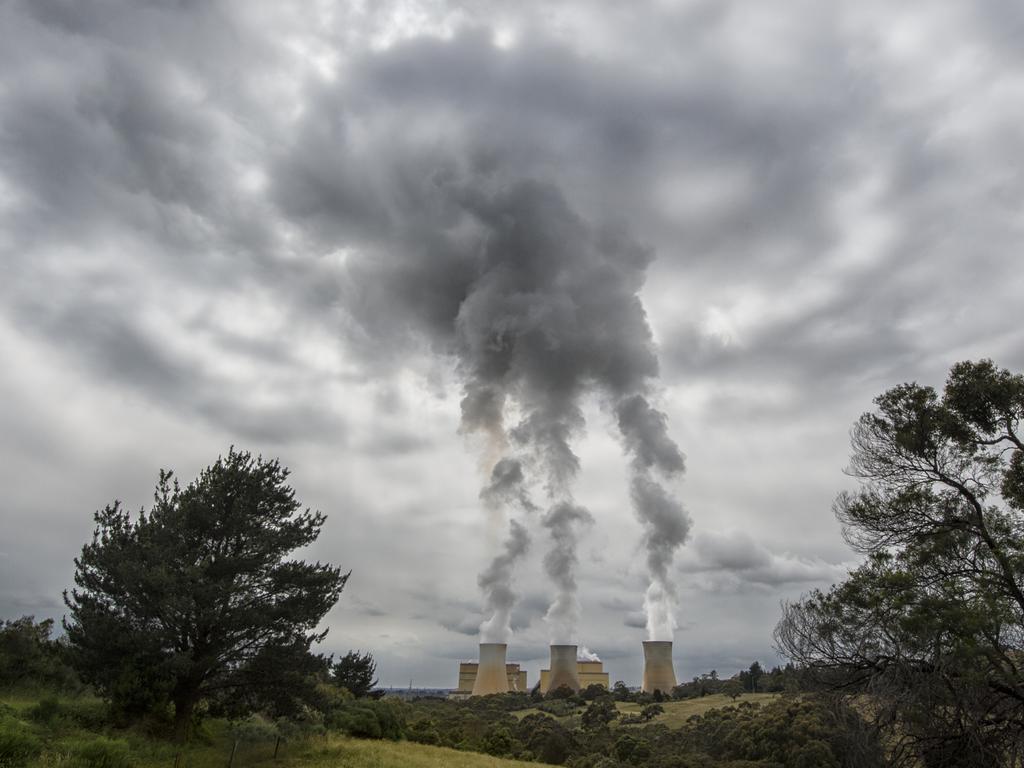Green bank needed for carbon storage to hit net zero goal
The Climate Change Authority calls for the government’s $10bn ‘green bank’ to be used to turbocharge the nation’s carbon storage industry amid pressure for deeper emissions cuts by 2050.
The federal government’s $10bn green bank and the Australian Renewable Energy Agency should be given expanded roles to turbocharge the nation’s carbon storage industry as pressure grows for deeper emissions cuts to hit a net zero goal by 2050.
The Climate Change Authority has recommended a far-reaching series of initiatives for scaling up and accelerating Australia’s approach to the capture and storage of carbon, known as sequestration.
It points to estimates from the Intergovernmental Panel on Climate Change that to achieve a 50 per cent chance of limiting global warming to below 1.5C, about six billion tonnes of CO2 will have to be removed globally per year by 2050, and about 14 billion tonnes per year by 2100.
“The situation is so critical that we need to do more than dramatically reduce emissions from all sources as fast and far as possible. We also need to remove from the atmosphere a lot of what has already been emitted,” Climate Change Authority chairman Grant King writes in The Australian.
While Australia has existing policies and institutions to incentivise carbon capture, the climate body says new approaches with industry need to be found to ensure enough investment flows to technology and new projects.
“A decade ago, Australia established the institutions needed to accelerate the development and deployment of renewables – particularly the Australian Renewable Energy Agency and the Clean Energy Finance Corporation,” the CCA said in a new report to be released on Monday.
“These institutions could be given expanded roles, or separate specialist institutions established to accelerate the development of carbon dioxide removal technologies.”
Carbon capture and storage in particular has been put forward as a technology fix to help Australia meet its emissions goals and part of a broader industry drive to hit net zero by 2050.
However, big operators like Santos have previously warned Australia is missing an opportunity to create a major carbon capture and storage industry and called on governments to prioritise the technology.
The Climate Change Authority has also pushed for changes to give the industry a boost. “Investment in approaches like CCUS (carbon capture, utilisation and storage) with high upfront costs need to be de-risked. Governments should explore risk-sharing approaches – for example, carbon capture and storage hubs – including opportunities to coinvest in subsurface basin analyses for geological sequestration both on- and offshore, and keystone infrastructure for storage and transport,” the report says.
“Strategies for collaborative information sharing should be developed to encourage broader industry progress. For example, there is limited understanding of well-defined geological storage sites on and offshore. Government could partner with industry for data sharing – including privately held data – to undertake analyses of geological injection and storage potential at sub-basin scale.”
Santos is already devising a giant ‘‘carbon sink’’ scheme where it can offer energy operators the ability to strip out and bury carbon from their gas supplies at its Moomba hub in South Australia. It’s also moving ahead on its Bayu Undan carbon capture and storage plan in the Timor Sea and is considering a third CCS hub based at its offshore WA operations.
The report also calls for separate targets for emissions reduction and carbon removals to build future demand and guard against sequestration being used to delay emissions reductions.
Australia may also be able to tap into the need of some major trading partners to find a home for their own pollution.
“Many of Australia’s trading partners are likely to drive market demand for the development and deployment of sequestration technologies. This may present opportunities for Australia to export sequestration technologies and import carbon dioxide for storage,” the report stated.
The Productivity Commission said in March the Albanese government should consider a dramatic expansion of its carbon emissions crackdown and put an end to renewable energy subsidies to achieve the cheapest path to net zero emissions.
The report says climate change “looms large” over Australia’s productivity growth and the best way for the nation to meet its 2050 net zero emissions goal is to broaden the existing “safeguard mechanism”, which requires heavy emitters to slash emissions by nearly 5 per cent each year to 2030. The commission recommends expanding the scheme to include the electricity and transport sectors and calls for an end to clean energy and electric vehicle subsidies.
The Albanese government’s signature climate change scheme, due to commence in July, requires heavy-emitters to slash emissions by nearly 5 per cent each year to 2030.








To join the conversation, please log in. Don't have an account? Register
Join the conversation, you are commenting as Logout